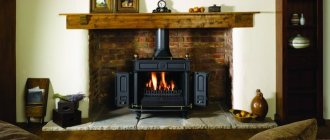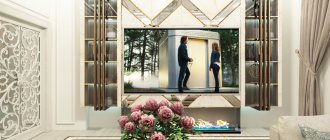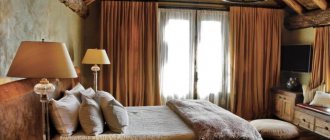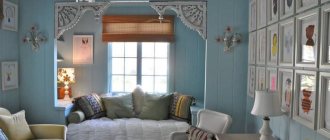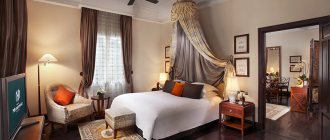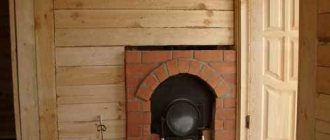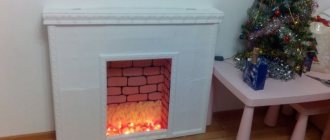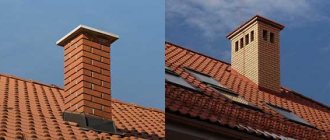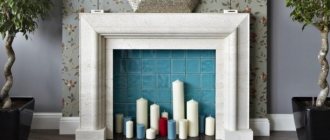Brick fireplaces are in particular demand among home owners. This design has not only decorative functions. The main advantage of such fireplaces is the ability to heat the room. In addition, a brick fireplace-stove is also used for cooking.
Advantages
Modern technologies keep pace with people's needs. It is for this reason that the long-known brick stoves have been replaced by new fireplace stoves. This design is a monoblock with a pipe channel and is installed on a single base. Moreover, each element has its own special meaning.
Conventional stoves have no decorative value, but you can cook with them. Fireplaces can please the eye and heat the room. But the fireplace-stove combines the functionality of both devices with an interesting design. It's like a fireplace with a stove - very convenient and functional. The main advantages of a brick stove-fireplace:
- The structure can warm up the air in the room quite quickly.
- The stove and fireplace can be used separately from each other. You can only cook or only heat the room - as you wish.
- Efficiency is about 80%.
- Ash pans with holes under each firebox make the cleaning process very simple and quick.
- When manufactured with high quality, a brick fireplace stove will serve for decades.
The structure can be installed in such a way that the stove will be localized in the kitchen space, and the fireplace in the living room. If a real master gets down to business, the fireplace stove turns into a real work of art and will decorate your home for many years. A brick fireplace stove would be a good choice for a country house. This will save on heating and electrical costs in general. This design can also be used as needed.
Features and benefits
Not so long ago, a fireplace was used only in houses and cottages, but now it is also appropriate in an apartment. Real fireplaces can only be installed in country houses, and the living room area must be at least twenty square meters. It is worth remembering that a fireplace is not only a cozy piece of furniture, but also a bulky device that needs a reliable and durable foundation. It is impossible to install a real fireplace yourself, so you need to use the services of special specialists.
In order to make the interior of the living room warmer and cozier, comfortable and original, it is not necessary to use a full-fledged fireplace, because you can choose its electric variety. Such a fireplace can serve not only for beauty, but also serves as a heater in winter. The main advantage of such a fireplace is its simplicity and safety of operation.
Options
There are quite a few variations of brick units. They differ in complexity and functionality. The most common types are: Swedish, Finnish, Russian and Dutch. There are also modified versions of stoves that are named after their creators.
There are ovens that do not have a hob at all. They represent a rudimentary wall structure with smoke exhaust channels, fireboxes, cleaning and blower chambers located between them. Such units are used for heating. Another option is a fireplace-stove with a heating and hob surface. Such stoves attract people with their versatility. They are more complex to design and install. Let's consider several interesting types of brick fireplaces and stoves:
With open firebox
Fireplaces with an open firebox allow you to warm up the air in the room in a fairly short time. If this design includes a hob, cooking is very easy. Owners of such fireplace-stoves can install barbecues right in the house and barbecue at any time of the year.
With air heating
Air-heated fireplaces are considered the best for heating a home. In such designs, a cast iron firebox is used. The duct system extends throughout the house and the casing in combination gives the desired result - complete heating. The system works in such a way that cold air is directed directly into the firebox, heats up and rises up through the pipes.
With water heating
Fireplaces with water circuits are gaining popularity. This design may include a heating and hob panel. A stove connected to heating has a great advantage over its counterparts - it pleases the eye, warms the whole house, and makes it possible to cook. Such designs are often used for baths.
As already mentioned, there are modification options. But knowing the basic models, you can easily choose the format that is convenient for you.
Unusual: custom design options
Analyzing the latest design solutions, one cannot fail to note the wide scope of application of this type of surface decoration. A brick wall in the bathroom is a very bold, infrequently used move. More suitable for spacious rooms. This is quite an expensive step - you will have to spend money on moisture-resistant types of clinker.
The use of decorative brick in the interior of a children's room will become the main highlight if you add functionality, for example, bookshelves. White painted brick in the nursery’s exterior will be a good backdrop for bright children’s furniture, children’s crafts and your child’s creative expressions.
The latest trend is the use of glass bricks: transparent, matte, colored shades. A glass partition that imitates a characteristic pattern is ideal for a small apartment, dividing the space and filling it with light. If there is a second floor in houses or multi-level apartments, an interesting solution would be imitation on the areas closest to the stairs.
Stylistics
A well-chosen fireplace should be combined with the overall style of your interior. Only then will such an addition look beautiful. Fireplace stoves are often made independently or to order. The Finnish model is quite popular. Let's look at the most popular styles in which this unit is made:
Minimalism
Minimalism is characterized by strict forms and lines. In houses of this style, small fireplaces are installed, which serve a decorative and heating role. A laconic design with a minimum number of decorative parts is the perfect set. Any room in your home will become even more cozy when it has a mini fireplace.
A small fireplace stove will fit well into a minimalist interior and will delight you and your guests. In addition, this option is well suited for houses with a small area. Here you can also install a structure in which the stove will face the kitchen, and the fireplace itself will face the living room.
Classic
Fireplaces of this style were the first. They were installed by noble people as an interesting piece of furniture and a sign of their superiority. Such fireplace stoves always have the correct shape and only expensive finishing or carving.
Such units usually go flush with the wall. This arrangement determines the main decorative accent on the firebox itself. All designs of such furnaces include a U-shaped portal. But you can also choose a non-embedded option. In this case, the fireplace stove is located against the wall, and the chimney is covered with a stylized casing.
Modern
This type of fireplace stove is often chosen by young people. You can buy a lot of interesting options. Such units are often used as architectural details. These fireplaces are often installed so that they blend into the wall and resemble a window with a fire. An interesting option is when a double-sided fireplace stove is installed in the interior wall. With this arrangement, you can use the structure as a piece of furniture on one side, and on the other as a stove.
Rustic
These are country style fireplaces. This design will look good in a wooden house. Natural wood ceilings, harmoniously selected wall finishes and dark floors. Moreover, using wallpaper in this case is completely impractical. They will quickly become unusable due to the stove. A Russian stove works well. Carved decorative elements will add originality and exclusivity.
Venetian
Fireplace stoves of this style are quite massive and clearly stand out against the background of the wall. They are designed to show everyone around their power and sophistication in one person. In an interior of the appropriate style, such fireplaces look like a charming integral attribute.
Decorative brick for the living room
The most popular way to use brick in the interior of a living room is to decorate the only wall that most often comes into view, for example, the TV area. You can do the opposite - the area where the sofa is located, then the soft velor upholstery will contrast with the “brutal” finish. Paradox: luxurious crystal chandeliers and classic curtains look appropriate. Good zonal lighting will highlight the texture.
White brick in the interior of the living room is a phenomenon that is gaining polarity, as is eco style in general. Together they are able to give the room spaciousness and cleanliness. Current trends: loft, minimalism, hi-tech. In the latter case, by supplementing the idea with plasterboard structures, a special place of power for high-tech office equipment is created.
Red brick walls are the most common design option for a living room. This modification goes well with white plaster. Please note: the furniture against their background should look quite bright and contrasting. The combination with wood is a natural combination for the living room, supported by glass and metal accessories.
Often the design features of a room involuntarily push towards more daring decisions. In houses of monolithic construction, the presence of load-bearing columns is a given, from which there is no escape and must be played up. Duplicate finishing of columns with brick is just a way out, a bright accent. If the volume of the room allows (the living room of a country house), you can enhance the effect with a ceiling made in the same solution. Wooden beams and ceilings are a great addition to the Mediterranean style. Practical: studio apartments, when the need to separate adjacent interiors is a priority.
Principle of operation
Any stove has three main components: firebox, pipe, chimney. The main part is the firebox. This is where the wood burns. There is a hole at the bottom. Through it, air enters the firebox, which is necessary for combustion. This hole is covered with a special grill, so the firewood does not fall out. Air gets inside the firebox, and ash and other combustion products fall from the firebox into the hole.
There is a special door that allows you to put firewood into the firebox. And the firebox itself is closed on all sides. Just above the firebox is the hob. It is heated by fire and allows you to cook food. Oven ovens work the same way.
The ash pan chamber is located under the firebox. It also has a door to allow the chamber to be cleaned. The door is also able to regulate the amount of air that enters the firebox. In the arch of the firebox there is another hole - hailo. It is through it that hot air comes out, which heats the oven.
The pipes are designed to remove combustion products from the furnace. There are two types:
- Mounted. Installed on the stove.
- Indigenous. They may have their own foundation or be located inside a wall.
The most important feature that distinguishes a stove from a fireplace is that in the second option you can freely observe the fire. To prevent heat from escaping into the pipe, a heat shield is installed. In the combined version, the stove-fireplace has all the advantages of a stove and allows you to observe the flame.
Materials
The variety of available materials for making brick fireplaces and stoves is quite limited, but it allows you to create unique products. The units can be constructed from both ordinary bricks and figured bricks. When choosing a brick, its strength grade plays a big role.
Fireclay bricks (less commonly, quartz bricks) are used quite often because they are not sensitive to high temperatures. They lay out the area near the firebox. Heat resistant material is a must. Figured brick is relevant if you do not plan to decorate the fireplace stove. If any decorative work is planned, the external data of the masonry itself does not matter.
Clinker brick is one of the varieties of quartz. But in its production, slightly modified technologies are used. It is not used so often for two reasons: the material is quite expensive and heavy. But if your stove is large, then such a brick is perfect for building a foundation.
In order for the appearance of the structure to please the eye, you need to be guided by certain requirements when laying out the facing layer. The brick should be fairly solid and have good heat transfer. Paint will help create a unique look for your fireplace stove.
Brick in the interior of rooms
Brickwork has a place in any room
See alsoTerracotta color - what is it? Photo
Hallway
In the hallway this decor is most appropriate, but most often remains an inconspicuous background for furniture, mirrors and interior doors. But here, too, some decorative techniques can be used, for example, an “unfinished” partition or a “fortress” “destroyed” at the edges. The masonry can be presented in the form of a small column or block to zone the space in front of the kitchen, separating part of the hallway from the long passage.
Small chests of drawers or tables look impressive near a brick wall, above which it is appropriate to hang a mirror
See alsoJapanese style in the interior with a modern interpretation
Bedroom
In the bedroom, color is everything. Some people are interested in what goes with a white brick wall. It is not so important what shade of bricks is pure white, milky or grayish. This universal solution fits almost everything, not only as a decoration, but also purely practically.
In a bedroom, brick is most often used to highlight an accent wall.
A grayish tone will look pristine white against dark textiles and wood finishes, but will appear dirty in comparison to crisp white sheets. In the interior of a modern bedroom, brickwork at the head of the bed will look extravagant, regardless of the chosen shade.
See alsoLoft style in the interior of a small apartment
Corridor
In long corridors, recreation areas and passageways of large private houses, there is no need to spend money on finishing if the design of the brick wall in the interior looks very impressive.
You can decorate the wall of a narrow corridor with your favorite photographs.
See also: Combine blue with other colors correctly
Kitchen
In the kitchen, these techniques are also quite appropriate, and in the interior of the cooking room it looks most organic. Any non-standard imitation of a hearth with open masonry will be an excellent decor in a country style, retro or imitation of a setting in the spirit of a Romanesque castle. The brick base is suitable for a bar counter between the kitchen and dining room, and also as a window sill block between the balcony and a compact catering unit.
A white brick wall will visually increase the space of a small kitchen
See also Design of a one-room apartment 30 m2. Basic principles
Living room
The modern living room uses a lot of design ideas to use masonry for practical purposes. Decorative brick in the interior is always popular, especially in large areas. Using the same installation principle, partitions are made from glass blocks and mirror tiles. Diodes are placed under individual glass blocks to create an original lighting design.
A dark gray brick wall will create a pleasant, calming environment in the living room.
A large brick arch is another win-win technique. All these “chips” perfectly complement imitation wallpaper and real masonry. A real fireplace with decorative cladding will provide extraordinary comfort on cold nights, but even an imitation will add aristocracy and comfort to the room.
See alsoWe work with convenience. What should the office design be?
Studio apartment
In studio apartments, loft apartments and two-level duplexes, decor in the form of masonry is often used under the staircase space and in the entrance area. This technique gives the industrial “brutality” that distinguishes this style.
Red clay brick walls attract attention and become the main decorative element of the interior.
See alsoThe most common mistakes in interior design
Bathroom
Due to temperature changes and high humidity, it is not so easy to tile a bathtub and toilet, mini-pool and shower with anything other than tiles. Today, the so-called “hog” tiles, which resemble bricks in shape and appearance, are becoming increasingly popular; they are laid in the same way.
For a bathroom, facing brick would be the best option.
Or ceramic tiles in the shape of a brick
No less interesting are rectangular glass blocks - a durable translucent material that transmits light, but distorts the silhouette behind the wall. If you still prefer a natural analogue, choose a hyper-pressed block that does not collapse under the influence of moisture, but it is better to treat the masonry with fungicides.
See alsoIn what interior is linoleum appropriate?
Tools and accessories
Making a fireplace stove requires certain accessories. The most necessary:
- Kiln brick.
- Heat-resistant clay mixture.
- Door with heat-resistant glass.
- Cast iron firebox door.
- Iron door for chimney and ash pan.
- Furnace grates.
- Surface for cooking. A cast iron stove should have the number of burners you need.
- Corners and corner shelf. As a rule, they are made of steel.
- Steel sheet up to 3 mm. Asbestos or basalt sheets for thermal insulation.
- Pipe and parts for connecting the chimney opening.
- Rolls and boards of waterproofing.
- Mixtures of concrete and soil.
- Bags of crushed stone and sand.
- Ceramic granite or tiles.
You need to choose materials very carefully. The strength and durability of the fireplace stove depends on their quality.
Masonry technology
Before you line the fireplace-stove with bricks, you need to draw up a diagram. It reflects all the necessary elements in the right places. Construction takes place in several stages:
- Base. We dig a pit and fill the bottom with crushed stone. The formwork is constructed using planed boards, and the pit itself is filled with cement.
- After 3-5 days the work continues. The brickwork is covered with roofing felt. Now the bottom row of bricks is laid out.
- Next, drawings play a big role. In agreement with them, the remaining bricks are laid out and the casting is installed. In order for the brick to have better contact with the mixture, it is soaked in water. The order is of great importance. Stick to it and you won’t have to redo the work. The inner sides of the furnace are smoothed during the process so that combustion products do not subsequently settle there.
- Now the chimney. It is important to remember fire safety measures here.
- The fireplace stove should dry naturally. This takes literally a few weeks.
- During the period of active drying, the oven is heated. Do this until all seams are the same color.
Fireplace area
Fireplaces are associated with country holidays, and now they are boldly erected in city apartments, giving additional comfort. It doesn’t matter in which area the fireplace is located: bedroom, living room, kitchen-dining room, the brickwork will fit organically and enhance the local effect of the presence of the fireplace. Natural colors and textures will emphasize the brightness and naturalness of the flame if the fireplace is electric.
Combining a fireplace and a brick wall is acceptable within a single style, such as country. The decorative finishing of portals can be played out in contrast or done in the same color scheme, for example, against the background of light clinker, a hearth trimmed with black marble looks impressive. The central decoration of any room will be a fireplace portal, lined to the very ceiling, against the backdrop of a vertical plane of snow-white brick in the Provence style. Brickwork is ideally combined with forged products, which are used in abundance to decorate the fireplace area.
Types of chimneys
The chimney acts as a channel system and is located inside the brickwork. The dimensions of the chimney directly depend on the dimensions of the fireplace stove. There are several types of chimneys:
- The simplest chimneys consist of certain sections that combine direct and return air flow. This design ends with a pipe. Return current areas are constructed from parallel channels. This is done in order to increase efficiency and improve air heating.
- Multi-turn chimneys. They differ from the previous ones only in the number of alternations of sections. The walls are heated more evenly because of this.
- Chimney without ducts. In such designs, everything is focused on the camera. Gases from the heil tend to the roof of the chamber, where they cool and descend back. The vapors give off their heat to the walls of the hood chamber. Exhaust gases exit into the pipe through openings at the bottom and side.
Any type can be used. It all depends on your needs.
Tips for use
Experienced stove makers can give useful advice on both the construction process and the operation of the fireplace stove. Do not use coniferous firewood, otherwise the chimney will become dirty and stop functioning. Firewood should always be well dried, this is important for long burning. Under no circumstances burn household waste and various types of waste paper - toxins will be released into the air.
A sauna stove must meet many criteria. Reviews show that it is better to pay attention to Finnish manufacturers. Every part of their product comes with a warranty, making repairs easy. A fireplace screen should be quite reliable.
When constructing with your own hands, always use the diagrams. They will help you understand exactly how the components should be placed in each line. Be sure to use a building level during this process. Corner and front structures are the most popular. But this depends on the overall layout of the house.


